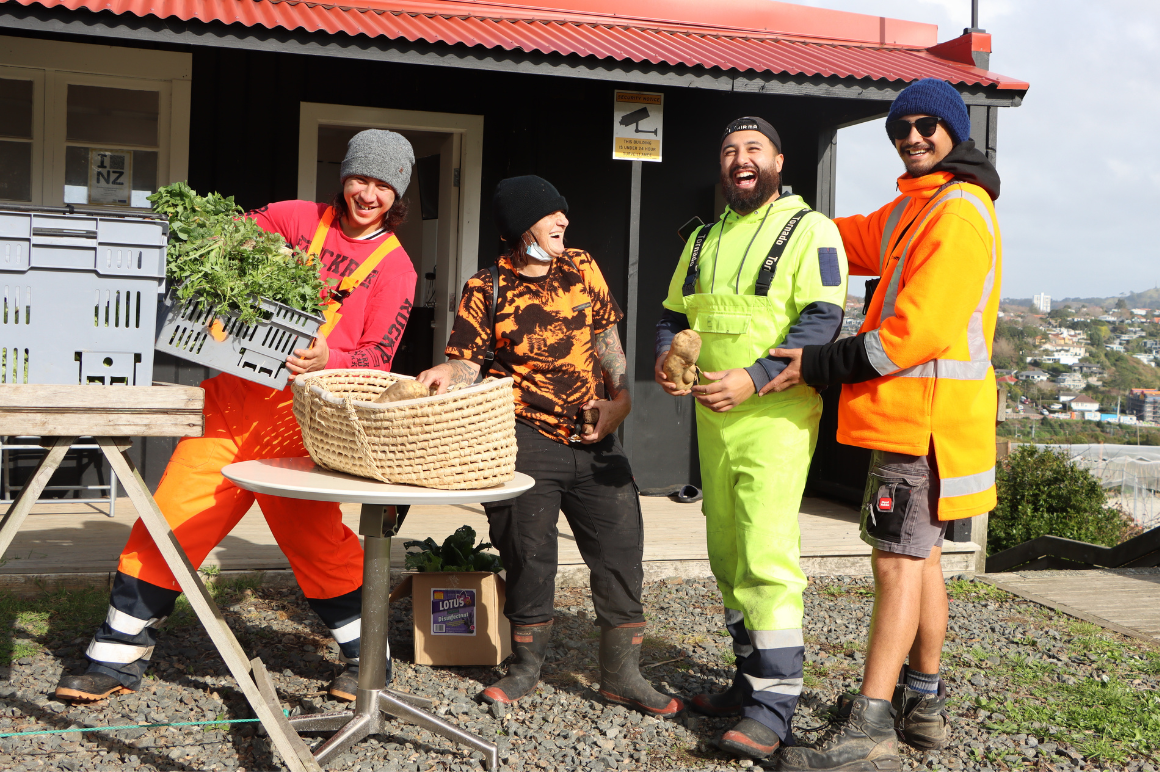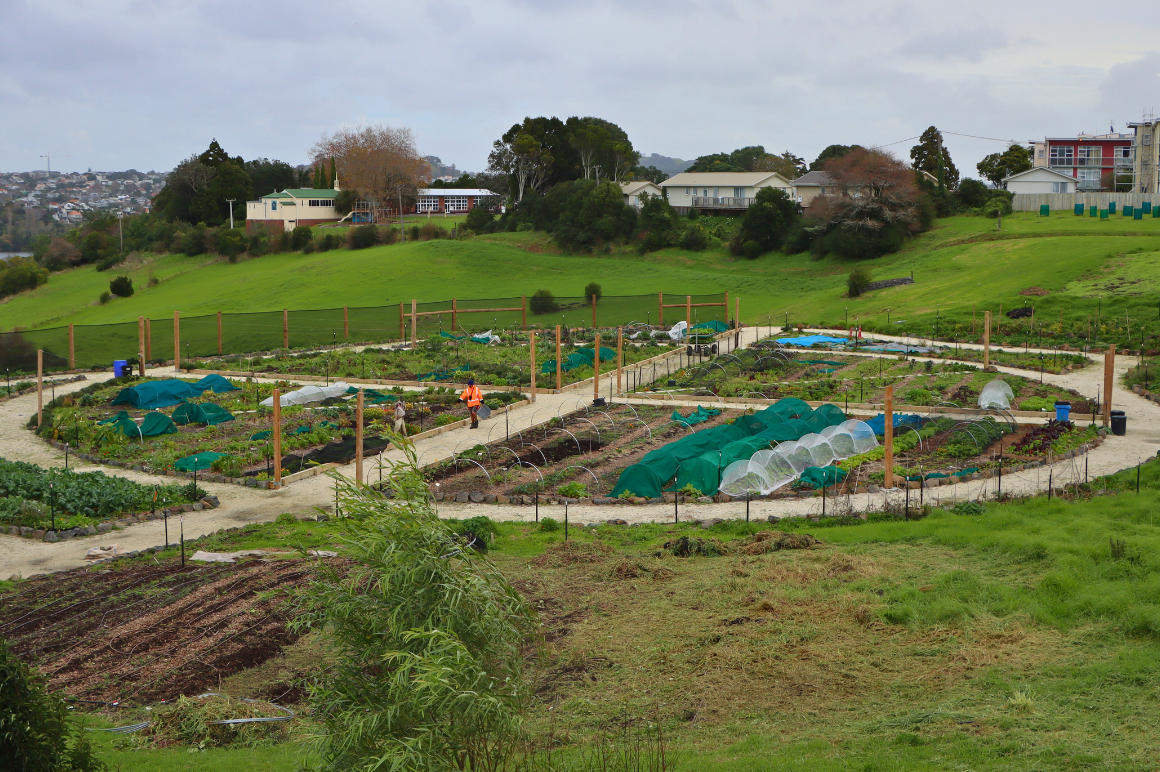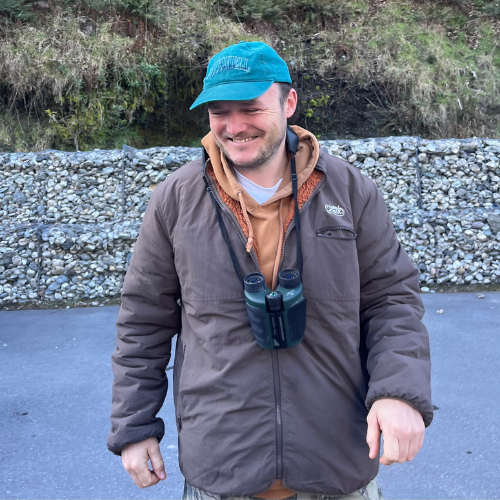
Like all things in te ao Māori, our food has whakapapa. All animals, minerals, fungi and plants – both wild and cultivated – have a specific connection to each other, to the tides, stars and moon, and to atua, Māori deities.
For hundreds of years, long before the terms “food chain” or “eco-system” entered the English language, Māori observed their natural world closely in order to trace those connections and create a system of hunting, gathering, gardening and preserving that would ensure the sustainability of resources.
With changes in the climate affecting food production globally, and the cost of living growing exponentially, mātauranga Māori still holds many lessons in climate resilience and easing food insecurity.
Te Pourewa is one of a number of māra kai initiatives in Tāmaki Makaurau. It sits high on the Kepa Road ridge line in Ōrākei, once a strategic point for a sentry tower with sightlines to mountains in the east, south and west. The Ngāti Whātua Ōrākei-owned and run nursery and gardens stretch out tidily along fields that until five years ago homed the St Heliers Bay Pony Club.
The urban bush and biodiversity development in surrounding areas has been ongoing for around 20 years. Initial planting of natives from Auckland Council nurseries had mixed results, with some species unable to adapt to the conditions, so eco-sourcing from the local environment and propegating began onsite. These natives now form a barrier of protection around Te Pourewa, and Takaparawhau further towards the cliffs that overlook Ōkahu Bay – where Ōrākei marae keeps watch on Waitematā below.

Eco-sourcing to help farmers, individuals and other marae seed and grow native plants from their own ngahere now forms a core service of Ōkahu Rākau, the Te Pourewa nursery where seedlings are lovingly nutured and then ushered out into the world by “plant māmā” Wendy Watts.
Wendy learned about planting from her grandparent’s genenration. “I sat at their side in whatever they were doing. I love dirt!” she says passionately.
Alongside their own eco-sourced plants, about half of Te Pourewa taonga species came from Kōanga in Wairoa, who specialise in heritage seeds. “They give us seeds with the understanding that once we’re up and running, we give them back so they can carry that on. Like our purple taewa potatoes over there.”
Re-seeding root vegetables, like taewa and kūmara, for the following year’s crop is a practise Wendy’s ancestors were very familiar with. “You always think about next year’s crop when you harvest, not just what you can eat now. Our ancestors might have had some hungry days but they knew that no matter what, you save some for next year’s crop and replenish.”
“We save the big hearty ones with no blemishes on them,” says whenua kaitiaki, Levi Makoare, who oversees the large vegetable gardens adjacent to the nursery. “You can’t use damaged rīwai or kūmara because they won’t hold for the year. Then a year later we put them in sand to warm up and then they start sprouting their tupu (shoots).”
“He’s a sponge,” says Wendy about Levi, appreciatively. “He just soaks up the mātauranga, you only have to tell him once.”
The language used by the pair to discuss the plants at Te Pourewa reflects that they are considered whānau. There are “babies”, “teenagers” and “kaumātua”. Some are easy-going and eager to grow, others are stubborn and don’t like to be looked at. The “kaumātua plants” – hearty natives such as rimu and tōtara – need sleep, warmth and protection.
“You can tell when a plant’s sad. They’re like us. You can tell if they’re sick by looking at them. And you can feel it too, so we’re always touching them,” Wendy says fondly.

Te Pourewa runs on solar and harvested rainwater and is organic and pesticide-free. Levi points out a number of ailing plants that have produced new leaves again after being fed diluted milk.
“We use a lot of comfrey, seaweed, corn starch,” adds Wendy “We always tell people you don’t need to buy fertiliser, it’s in your kitchen. Banana peels – soak them in hot water and use the water when it cools. That’s the potassium they need. Use the water from washing your rice. Tea bags. Coffee. It’s through observation that we decide who needs what.”
Pest-repelling plants – nasturtium and multiple variations of marigold – line every garden bed. At Diwali, the Indian community come and help themselves to the marigolds to make festive garlands.
“When we say community garden, we do mean the whole community.”
The underlying mātauranga the kaimahi at Te Pourewa are trying to share with their community, is that the cost of starting and maintaining a garden is lower than most people think. And Wendy, Levi and the other kaimahi are there to help.
“We’ll give them whatever they need. We’re trying to teach people that it’s not about cost – this is for you and your wellbeing and wairua. A lot of people find themselves here. Plants are a great way to find yourself.”
Although Te Pourewa is planted high on sloped land, it didn’t escape the effects of the 2023 floods and storm damage. About half their crops were wiped out. Again they looked back to lessons of the past and replanted their vegetable patches in mounds, as their ancestors would have done, to keep them away from pooling water.
Vegetables grown here are delivered to kaumātua in the area, who also get to express a preference for what is grown (kamokamo and pūhā are popular). When tangihanga or other large events happen at Ōrākei marae, the kaimahi of Te Pourewa are there, supplementing supplies and of course, mucking in with the food preparation. There is a community plot too, where locals can plant a garden and reap its rewards, with the benefit of Te Pourewa expertise and oversight to help them along.
“The gardens here are always open, only the nursery gets locked up when we’re not here, to protect them from sickness,” emphasises Wendy. “Otherwise the whole community is welcome here, any time.”

Te Pourewa are in the process of becoming Hua Parakore verified – an organic growing system developed by researcher Dr. Jessica Hutchings and Te Waka Kaiora, a food sovereignty collective that supports māra kai initiatives, agriculture and horticulture that is free from pesticides, fertilisers and GMO. It is the first indigenous system for certifying organic kai using indigenous values and Māori principles.
Hutchings writes in her book, Te Mahi Māra Hua Parakore: “In Aotearoa it is our right as Indigenous peoples to eat from the lands and waterways of our tūpuna (ancestors). This right is ours to claim and we restore our relationship to the natural environment by producing our own food. Enhancing soil, plant and species biodiversity through food production is vital for the survival of our natural food systems.”
It's this same dedication to food sovereignty and local kai systems that underpins national food movement, Eat New Zealand. The not-for-profit encourages collaboration between all parts of New Zealand’s food system, championing more than 130 kaitaki food leaders across the country, who represent growers, farmers, chefs and restaurateurs, nutritionists, researchers and more, who are dedicated to local food economies and regeneration.
One of those is Jono Thevenard (Ngāti Rangiwewehi, Ngāti Manu), chef and co-owner of well-loved Auckland restaurants Pici, Ooh-fa and wine bar, Tappo. He is also a passionate hunter, gardener and diver.
“My goal is to know the whakapapa of my kai,” he says. “That’s what the Eat New Zealand kaupapa is all about – getting closer to our food sources and cutting out the middle man.”
The “middle man” he refers to is New Zealand’s supermarket duopoly, Foodstuffs and Woolworths Group, whose non-competitive behaviour and high pricing have been the subject of much scrutiny as the cost of living continues to soar.
“I like to try and use things that are a pest in Aotearoa, whether that’s kina, deer or wallaby, which is massive in the central North Island now. There’s a big, untapped resource that’s going to be positive for the environment. The ngahere is full. Things may have changed because our climate and bio-diversity have changed, but we can adapt and be part of the solution.”
For his restaurants, semolina flour comes from a miller in Wairarapa. Eggs come from a local free-range supplier. Meats come from Grey Lynn Butchers, whose goods are also local, organic and free-range, and fish and wild-caught venison comes from Awatoru Wild Foods in Kāpiti.
“That connection came about from [Scott McNeill of Awatoru] coming in one day. We had found each other on social media. Social media has been a big part of how we make that network of kai suppliers.”
He also names Māori winemakers, Huntress and Tawhiti, as important parts of that network – personal relationships grown through a mutual belief in living in harmony with the land.
Some produce is still outside that scope at this point, he says regretfully. “We still have to get dairy and vegetables through a wholesaler. When you run a business you need to have that consistency of product, so it’s especially hard here to have say, one supplier for onions.”

Jono’s dream solution to that challenge seems almost impossible, he admits, but yet is a reality in most large cities.
“Farmers markets work on a Saturday in a bougie sense, but what if we had a big space with different suppliers that sell their goods throughout the week – a dairy and cheese supplier, different produce?” He cites Borough Market in London and Sydney’s Growers Market as just a couple of examples, pointing out that they are also ubiquitous across Europe and Asia.
“What we do have is a really awesome Asian community, and Indian community. You look at the popularity of Avondale market and who is buy and selling there. We actually do have enough suppliers and buyers to fill a permanent market place.”
He has even identified a large, seemingly uninhabited warehouse in Balmoral adjacent to ample carparking that would make the perfect site.
“I just need a philanthropist to do it, someone with lots of money,” he says, adding that government intervention seems unlikely.
At the end of the day, he says, community and kaupapa are his “why”.
“You definitely don’t do it for the money,” he laughs. “But it’s not about that. I just want to live with dignity, and I want that for the rest of my community too.”
Whether it’s the māra kai movement, hunting introduced species or choosing where to dine out – connection, sustainability and sovereignty underpin the growing consciousness of local kai systems. And above all, responsibility, says Wendy Watts of Te Pourewa.
“I’m not a kaitiaki just because I was born Māori. We’re all kaitiaki.”

